Begonie - Tutto Quello che Dovresti Sapere Sulla Cura Della Begonia
La begonia appartiene al gruppo delle piante più popolari. Appare negli interni delle case, nei cortili e nei giardini. Ci sono molte varietà di begonia, ma fondamentalmente ognuna di esse è facile da coltivare, poiché non ha esigenze particolari. Vi state chiedendo se la begonia è la pianta che fa per voi? Controlla i fatti più importanti su di essa e scoprilo.

Begonia - che tipo di pianta è?
La Begonia (Begonia L.) appartiene ad un gruppo più ampio di piante chiamato Begoniaceae. Sia le piante da appartamento che le piante coltivate all’esterno appartengono a questa classificazione. Si stima che ci siano circa 1.500, o forse anche 1.900 tipi di begonia - non tutti sono ancora conosciuti, però.
Le begonie sono molto popolari. Il fatto che queste piante siano coltivate in tutto il mondo è la prova migliore. La maggior parte delle varietà menzionate proviene dal Sud America.
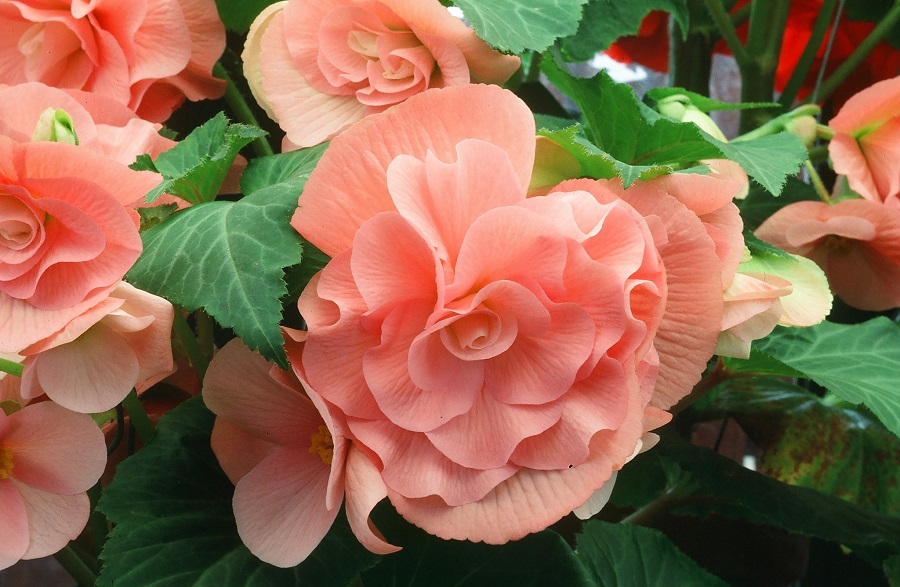
La begonia è una perenne?
La maggior parte delle persone coltiva le begonie come annuali, soprattutto nei giardini. Ciò deriva dal fatto che la pianta non è molto resistente alle basse temperature e al gelo. Ma, a quanto pare, si tratta di una pianta perenne. Se decidete di coltivare le begonie in contenitori in casa, potrete godervele per lunghi anni.
Cura della begonia - di cosa ha bisogno la pianta?
Le begonie sono facili da coltivare, soprattutto perché hanno poche esigenze. Ma assicuratevi di controllare di cosa ha bisogno una particolare varietà. Alcune di esse richiedono condizioni di crescita diverse.
Le begonie preferiscono suoli leggeri e permeabili. È perfetto se è ricco di torba, anche se non è obbligatorio. La pianta cresce bene anche in altri tipi di terreno, anche se in tal caso potrebbe aver bisogno di ulteriore nutrimento. Il terreno deve essere sempre leggermente umido - assicurati che non si asciughi mai.
Una begonia può crescere in mezz’ombra, anche se se potete scegliere tra sole o ombra per la pianta, notate che crescerà meglio in pieno sole. È un aspetto particolarmente importante per quanto riguarda la fioritura, che potrebbe influenzare i fiori e il loro colore.
Fornendo le condizioni ottimali per una begonia, ci si può aspettare che diventi una bella decorazione. Non è una pianta alta, però. In genere, non cresce più di 30 centimetri.
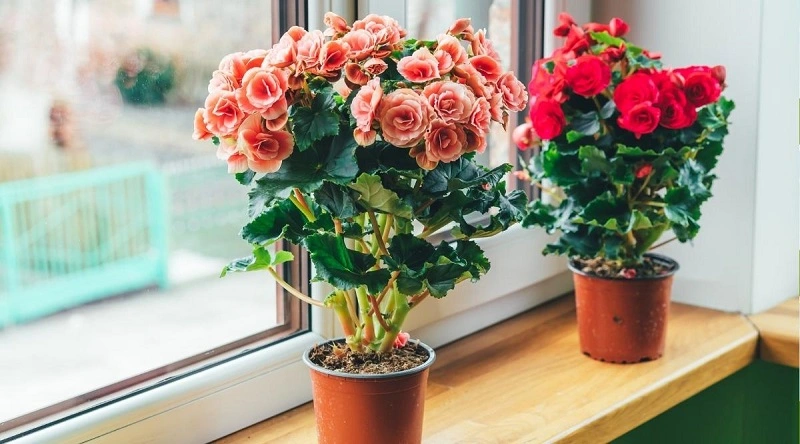
Quando piantare le begonie?
Se avete intenzione di coltivare una begonia in vaso, non importa quando la piantate. Alcune date sono importanti per le piante piantate nelle aiuole del giardino. In questo caso, la seconda metà di maggio (nelle zone a clima temperato) è un buon momento per piantare le begonie. È quando le temperature si stabilizzano e non c’è rischio di gelo - pericoloso per le begonie.

Quanti bulbi di begonia piantare in un contenitore?
Scegliere un contenitore abbastanza grande per le begonie non è l’unica cosa importante: in un vaso devono esserci abbastanza bulbi. Il loro numero dipende dalle dimensioni del contenitore. In media, ogni bulbo ha bisogno di circa 3 cm di spazio. Se il contenitore è lungo 30 cm, 9 bulbi sono la configurazione migliore.
Begonia - varietà popolari
A differenza di altri fiori da giardino e piante d’appartamento, le begonie hanno molte varietà. Si possono coltivare alcune di loro in un giardino. Ecco i tipi più popolari di queste piante:
- begonia tuberosa (Begonia ×tuberhybrida Voss)
- begonia boliviana (Begonia boliviensis)
- begonia ‘maculata Raddi’ (Begonia corallina Carrière)
- begonia rosa (Begonia gracilis)
- begonia Ricinifolia (Begonia ×ricinofolia)
- begonia arruffata (Begonia fimbriata)
- begonia hiemalis (Begonia hiemalis)
- begonia foliosa (Begonia foliosa Kunth)
- begonia reale (Begonia rex)
- begonia di cera (Begonia semperflorens)
Begonia maculata, dragon wing begonia e begonia silver spot sono tipi un po’ meno popolari. Ma sono ancora coltivate dagli appassionati di piante.
A giudicare dall’ampia scelta (le varietà di begonia menzionate sono solo una frazione di quelle coltivate nel mondo), ognuno dovrebbe trovare la pianta migliore che soddisfi le aspettative individuali - sia per quanto riguarda l’aspetto che il colore dei fiori.
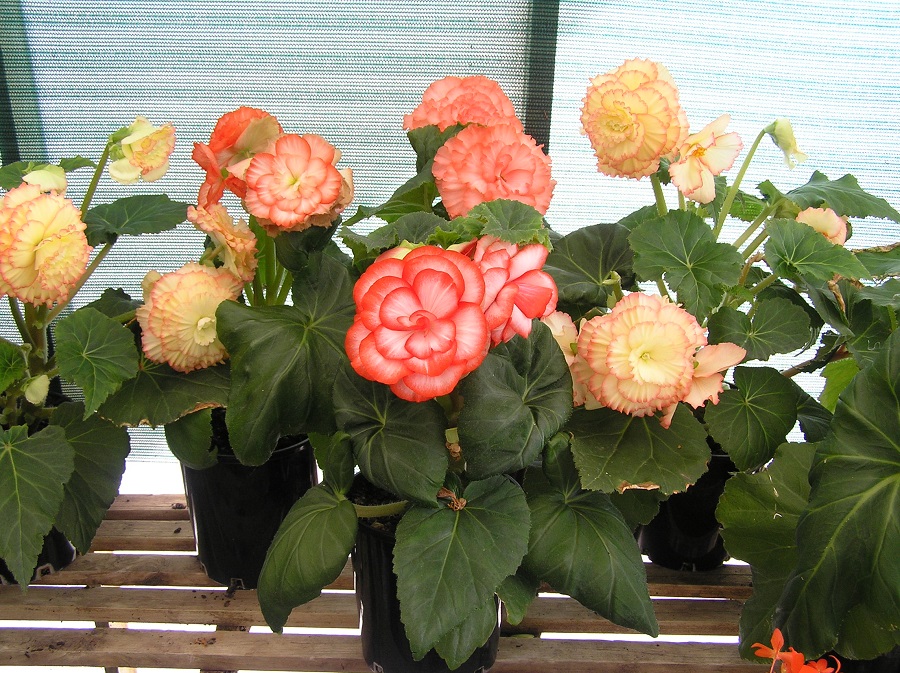

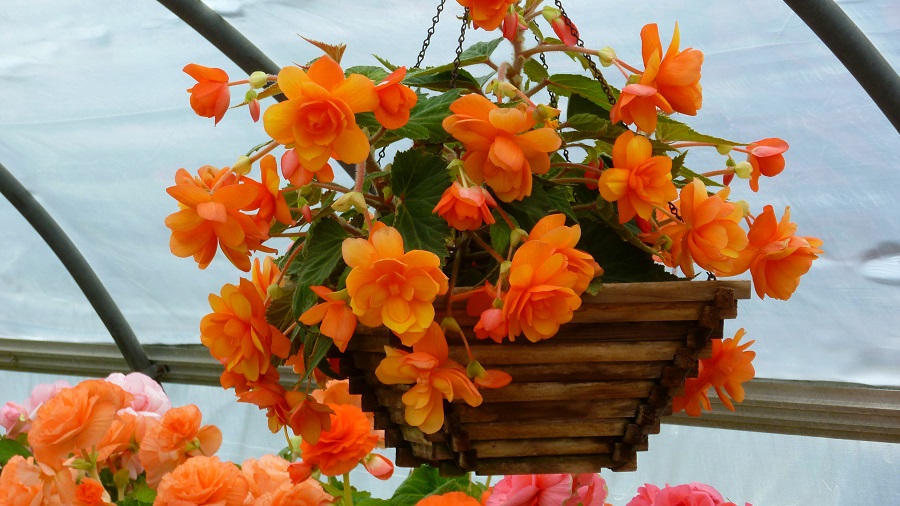
Come propagare le begonie
Le begonie possono essere propagate con uno dei metodi più semplici. Se volete far crescere nuove piante, avete solo bisogno di alcuni semi. Potete raccoglierli tra giugno e luglio.
Usare le troncature e i cosiddetti innesti sono un altro metodo efficace. Questo è il modo più comune di propagazione delle begonie usato nel giardinaggio professionale. È più popolare perché la raccolta dei semi è possibile solo per una selezione di piante.
I giardinieri esperti spesso propagano le begonie dividendo i bulbi. È abbastanza difficile, però. Non raccomandiamo questo metodo se non avete esperienza.

Svernamento delle begonie
Alcuni si chiedono se le begonie tornano ogni anno. Poiché le begonie sono piuttosto vulnerabili alle basse temperature, non possono essere lasciate nel terreno per i freddi mesi invernali. Dovreste dissotterrare i bulbi a metà ottobre e conservarli per esempio in garage, in un ripostiglio o in cantina. Assicuratevi che la temperatura in tale luogo non scenda sotto gli 0 gradi Celsius (32°F).
I bulbi di solito aspettano di essere riutilizzati fino a marzo. Questo è il momento in cui dovrebbero essere piantati in vasi e spostati in un luogo dove la temperatura è di almeno 17-18°C (62,6-64,4°F). Possono essere piantati nel terreno in maggio.
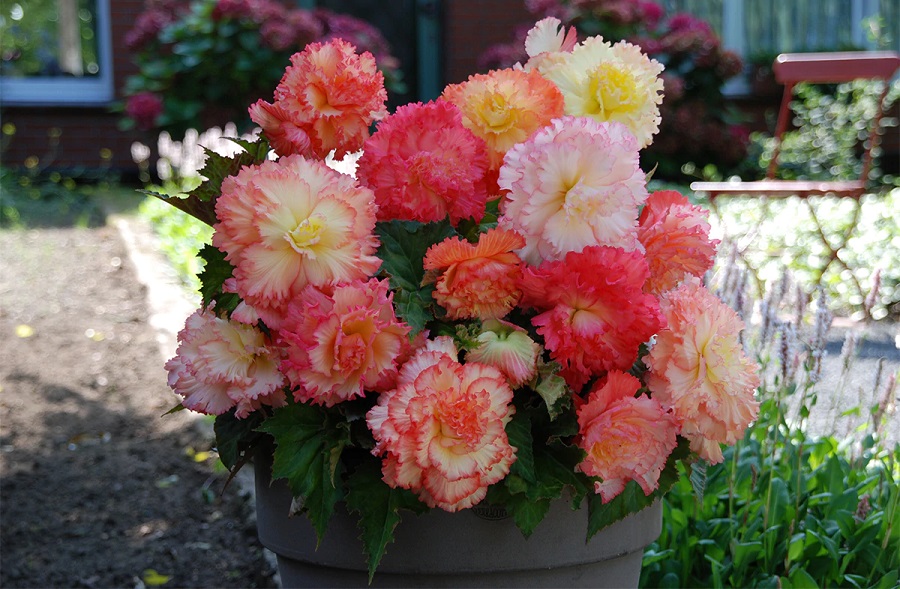
Malattie e parassiti della begonia
Varie malattie fungine rappresentano la più grande minaccia per le begonie. Di solito si sviluppano quando la pianta viene annaffiata in modo eccessivo. Ecco perché dovresti fare molta attenzione. Le malattie della begonia includono:
- marciume nero delle radici,
- botrytis,
- oidio.
Ma non è tutto. Oltre alle malattie, potrebbero comparire anche dei parassiti - specialmente sulle piante coltivate all’esterno. Gli afidi sono i più comuni. I seguenti sono ugualmente dannosi:
- acari del ragno,
- altri acari,
- nematodi.
Se avete notato che la vostra begonia non ha più l’aspetto di una volta - le sue foglie sono gialle, o appassisce, agite immediatamente. Potete ridurre alcuni pericoli usando rimedi naturali. Ma in altri casi, devi usare un prodotto speciale da un negozio di giardinaggio.
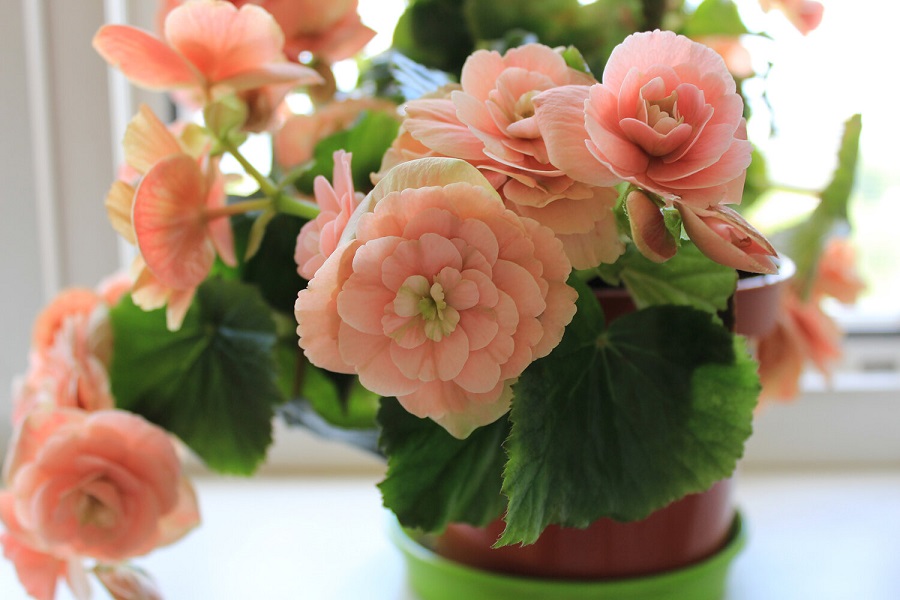
Si può favorire la fioritura delle begonie?
Se la vostra pianta si sviluppa lentamente, potete aiutarla un po’. Innanzitutto, assicuratevi che la temperatura sia giusta. Dovrebbe essere compresa tra 17 e 18°C (62,6-64,4°F). Inoltre, fornite alla begonia un livello di umidità moderato nel terreno e concimatela con prodotti specifici per piante ornamentali.
📍 Che aspetto ha una begonia?
Le begonie sono piante corte ma belle che hanno molti fiori. A seconda della varietà, può formare una cupola multicolore, o sviluppare rami pendenti coperti di fiori. Anche le foglie di una begonia sono belle. Se scegliete una pianta del genere per il vostro giardino, potete aspettarvi che diventi una bella decorazione.
📍 Quando piantare una begonia?
Si può tranquillamente piantare una begonia nel terreno non appena non c'è rischio di gelate. In genere, è la seconda metà di maggio. È quando le condizioni climatiche si stabilizzano.
📍 Qual è il miglior terreno per le begonie?
Il miglior terreno per le begonie è leggero e permeabile. Assicuratevi che sia ricco di torba. Fate attenzione al livello di umidità del terreno - dovrebbe essere sempre leggermente umido.
📍 Come innaffiare le begonie?
La begonia ama un terreno relativamente umido. Per questo motivo, dovreste annaffiarla regolarmente - a seconda delle condizioni, una volta alla settimana o una volta ogni pochi giorni. Fate attenzione, però, e assicuratevi di non innaffiare troppo le vostre begonie.
Articoli in primo piano




